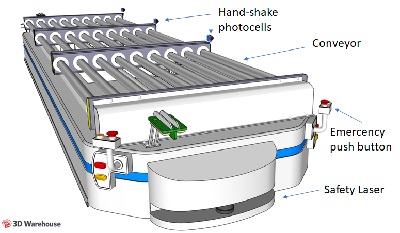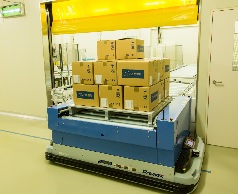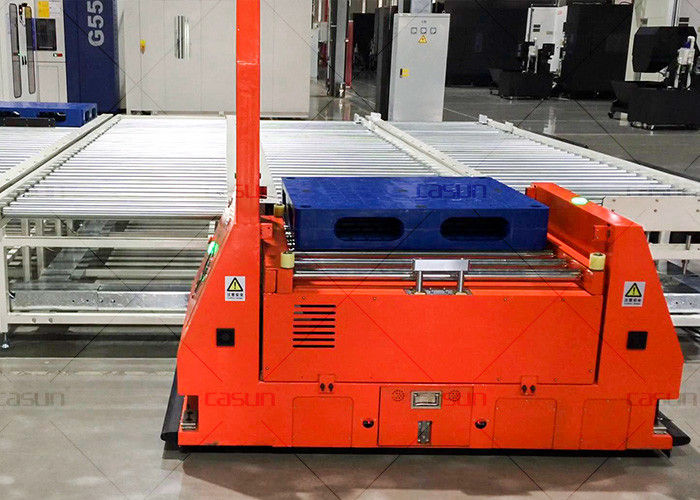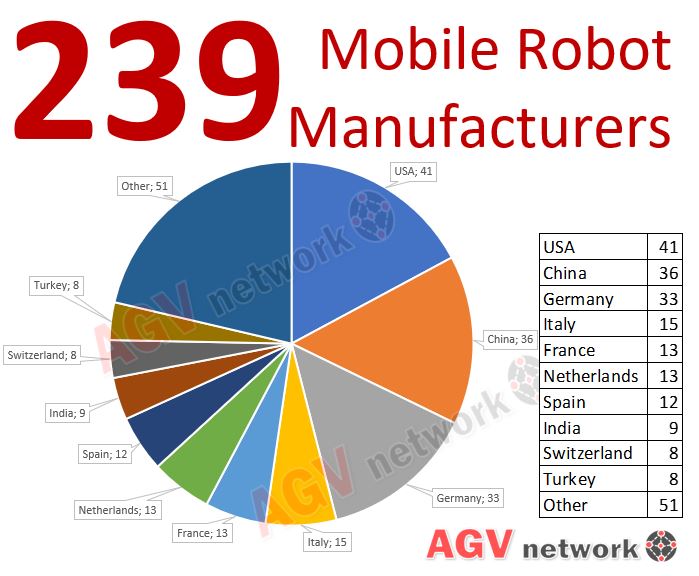Unit Load AGV - Overcome traditional conveyors - Top flexibility
Unit Load Automated Guided Vehicles (Unit Load AGVs) are the most efficient and flexible way to move material to and from fixed conveyors.
Unit Load Automated Guided Vehicles
The AGV that Overcomes traditional conveyors

Unit Load AGVs are a vital part of any efficient workplace warehouse distribution system or production facility.
What are Unit Load AGVs?
In simple terms, these robots are portable and autonomous cargo delivery systems that are able to travel around a warehouse or facilities performing different agv navigation technologies.
These fascinating robots are mainly used for industrial transport of goods and heavy materials around warehouses or storage facilities.

Unit Load AGVs, also known as Unit Load Decks, date back to the earliest iterations of AGVs.
Some AGV types tug goods while others pull or carry them. Unit Load are built to carry one or several unit loads at a time to and from conveyors, stands, end-of-line equipment (palletizers, wrappers, robots) as well as automated storage and retrieval systems (AS/RSs).
Think of a platform on wheels moving by its own delivering very heavy packages to pre-determined locations in a warehouse. AGV Unit Load can handle pallets, drums, boxes, totes, skidded items, etc.
Unit Load AGV can manage very heavy loads, even 44.000 lbs (20 ton)… or even more.
What are the different types of Unit Load AGVs?
Unit Load Deck AGVs can be equipped with different transfer devices to shift and transport the load.
They used to have a built-in conveyor that can move pallets of material off and on the deck of the AGV or a lift deck unit.

Both, conveyors or lift decks are ideal for handling pallets and racks of manufactured goods or raw materials as they have automatic load transfer systems.
Unit Load AGV types:
- Roller conveyors
- Chain conveyors
- Lift platforms
- Belt conveyors
- Shuttle systems
Like any well manufactured robot it can be built with custom automatic load transfer decks with multiple compartments.
What are main Unit Load AGV applications?
There two primary applications for Unit Load AGVs: manufacturing and warehouse distribution.
Unit Load AGVs Move unit loads from/to conveyors
AGV with built-in conveyors are exceptional for expanding the functionality of traditional conveyor systems.
In fact, AGVs are an unfixed conveyor extension able to pick-up and deliver several conveyors.
What does it mean? The answer: FLEXIBILITY

Traditional Fixed conveyor

Flexible AGV conveyor
While AGVs are not fixed (hopefully not), the working area remains open and free for people and forklifts. This is very important, not only for traffic viability but also for SAFETY reasons because fixed conveyors represent a physical barrier that blocks and limits scape corridors.
Check these pictures:

Risky difficult escape track

Safe easier escape track
In this article you can learn much more about AGV Safety Standards
Moreover, AGVs can be equipped with conveyors on fixed height or with scissor lift height adjustment so you can easily “connect” two fixed conveyors at different heights.
The AGV System needs to have a handshake with the fixed conveyors for safe and reliable load transfer. Handshake is usually done by photocells mounted on AGV and on the fixed conveyor, but it can also be done via OPC server.
Flexible assembly line. Unit Load AGV substitutes traditional production line (chain, etc)
There are two main types of AGVs used for production or assembly lines operations: Automatic Guided Carts ( AGC) and Unit Load AGVs.
AGV represent a huge improvement in terms of flexibility compared with fixed traditional assembly lines.
- AGV improves flexibility: Layout, scalability, line relocation
- Management Software integration
- Easier to integrate assembly with other logistics flows
- Automated guided vehicles improve operator ergonomics and safety

Unit Load AGV with lifting table
Regarding ergonomics, AGV Unit load can be equipped with several devices improving operator ergonomics such lifting tables, rotating devices, etc. These tools will minimize operator movements and will avoid non ergonomic operations.
Another AGV advantage is that in case of conventional fixed structure system failure, it is suspended all movement of material in the process.
When fix conveyor stops… everything stops
With the AGV system instead, the material or assembly line keeps on moving even if one vehicle is non-operational.
If your AGV System is well designed and AGV Workload Saturation is correct, your factory or warehouse would not stop even if you have one AGV out of order.
Think about maintenance, in case of 24 h operations you could perform AGV maintenance one AGV at a time and your factory would keep on producing.
If you are thinking about deploying and AGV system, do not forget to consider AGV maintenance costs and requirements.
Of course, Unit Load AGVs can be used in many other ways and applications…
The only limit is your imagination.

